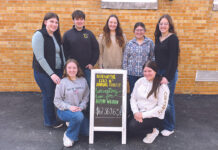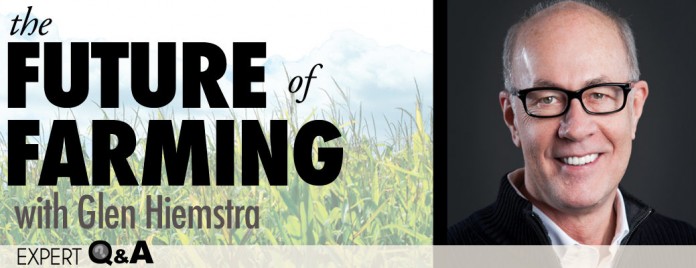F&D: We’ve got a couple questions here submitted to us via social media. Charles wants to know if non-traditional meats, goats, lambs, emu, will become a larger part of our diets and the market moving forward.
GH: Oh man, that’s something I have not looked into at all. My off the cuff response is that I don’t think so. I will give one caveat to that. They will continue to be small niche and specialty foods.The caveat is the growing diversity of the U.S. population.
By 2040, according to the Census Bureau, the non-Hispanic white population will be the minority population of The United States. That means you have many more people of color who come from historical cultures where those meats are a traditional form of protein.
One could imagine that in a more diverse, ethnic culture, some of that market could grow just based on ethnic drivers.
F&D: Carol from Greenford, Ohio wants to know if you think we’ll see an increase in GMO fruits and vegetables in the future? On that subject, what will the role of GMO fruits and vegetables be?
GH: Yes, we will see an increase in genetically modified, but I think that will be accompanied by an increase of regulatory requirements for labeling. That’s on the ballot here in the state of Washington, I know it got defeated in California. I haven’t read any polls, but I’ll be surprised if it does not pass in the state of Washington.
I think the consumer will be fine with genetically modified foods, so long as they know what they’re getting. The rate of increase of genetically modified foods will be highly related to what happens with the climate and food security and whether it’ll be biologically necessary to grow genetically modified foods to makes sure we grow enough food.
Bottom line, I do think we’ll see more genetically modified food, but it’ll be in an environment in which there will be a requirement for labeling.
F&D: What can small farmers do to stay relevant and competitive over the next 20 or 30 years.
GH: Two, maybe three things. If you’re a small farm, it’s sort of imperative to be on the sustainability bandwagon. I haven’t studied this, but I’m familiar with the film director Peter Bick. Peter made “Carbon Nation,” a documentary. He is persuading me that there is a growing understanding of how to rebuild a healthier soil using some fairly old and traditional farming methods, which don’t work on the super-large scale.
When I say get on the sustainability wagon, I’m really saying learn everything new about the building of soil as a carbon sink. Small farms that could turn their land into a carbon sink could become more valuable in a world in which we go to a carbon trading system, which is occurring in California.
Though we’re a long ways from that politically in the U.S., depending on what happens with the global climate, you could see a very rapid shift into a system that the ability to sequester carbon is highly valued.
F&D: What’s a “carbon sink?”
GH: If you’re growing grazing land, and your land is being maintained in such a way that your roots go back to the old prairie kind of root systems which were deeper and more robust than we have in the Midwest these days, those roots soak up carbon. They basically take carbon out of the air. That can all be calculated. You can look at how many acres and if that many acres pulls the following amount of carbon out of the air. Therefore on the carbon-trading system you could be paid for doing that.
That’s all kind of fringe stuff yet, at this point. We won’t really know for a decade, or two, how that plays out. But it’s an opportunity that the film director [Peter Bick], who is making a film on the subject, thinks is something for smaller farmers to look at.
I’m not sure how it’ll apply to the individual family-farm, but it’s something to pay attention to. The other thing is, if you’re part of the local-food movement, using the Internet. People want to know where their food is from. Getting into that game. Relatively small family farm operations become super stars on the internet.
F&D: Do you see drones in the future of ag?
GH: Yes! That’s a great question. Sure, why not? Will every farm have a drone that the farm manager/operator/owner can fly over the field and measure and observe stuff?
Related to that is the potential of the so called “internet of things,” such as a project that is putting sensors in forest land to alert people sooner of forest fires. It’s quite easy to imagine more and more embedded and implanted sensors on a person’s property, giving constant data.
Drones? Yea, that’s a really good one. Sure, why not?
F&D: Do you think there’s going to be a time when the grain markets aren’t controlled by the weather? Because of the way genetics is changing crops, do you see us going a different route in the future?
GH: That would be a very distant future… I say that, but I suppose somebody could come up with a genetic modification tomorrow that changes the whole picture over night.
The weather’s very powerful, and the globe is a very big place. You can look at some of the climate change scenarios and look at the maps of the potential drought areas and drought areas. OK, I don’t care what you do genetically, try to grow grain on this massive area of land with no water for 10 years. It’s not going to happen. Though clearly, there’s been some improvements with drought tolerance and salt tolerance in crops.
There is some interesting work going on with organic kelp based and other biological fertilizers. They’re showing some pretty good results in Africa and California and some other places. They include the ability to increase yield in conditions of drought, but they can’t overcome catastrophic level droughts.
My guess is, no. The weather will still be a factor 50 years from now.
F&D: When we started this conversation, we talked about the magic year 2050, when the food supply will have to double. Are we going to be able to do that, do you think? Or will we face a famine?
GH: I’ve actually heard bigger numbers than that. If the global class continues to grow, then the numbers could be even more than double.
I think the odds are that we’ll be able to figure out how to do that. It’ll require a lot of innovation. It could be innovation on the organic side, or it could be a new kind of agriculture. It might not look like the 19th century agriculture or the 20th century agriculture. Humans are inventive when they have to be.
F&D: Do you have a positive outlook when it comes to the future of agriculture?
GH: Yes, absolutely I do. Agriculture has shown an astonishing ability to produce food. Not that long ago, I don’t have the exact time, but it used to take 6,000 acres to provide enough food for one person for one year. Now we’re down to half an acre or less. That’s an amazing record. Though the rest of the world lags behind the U.S. in terms of that record, they will catch up.
On the large scale I’m pretty optimistic. On the small scale, I think that we’ll see more people participating in this local food and urban farming movement. To me, that’s very optimistic.










